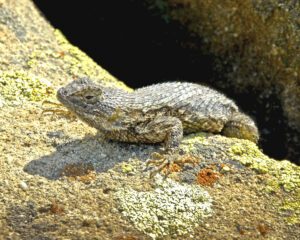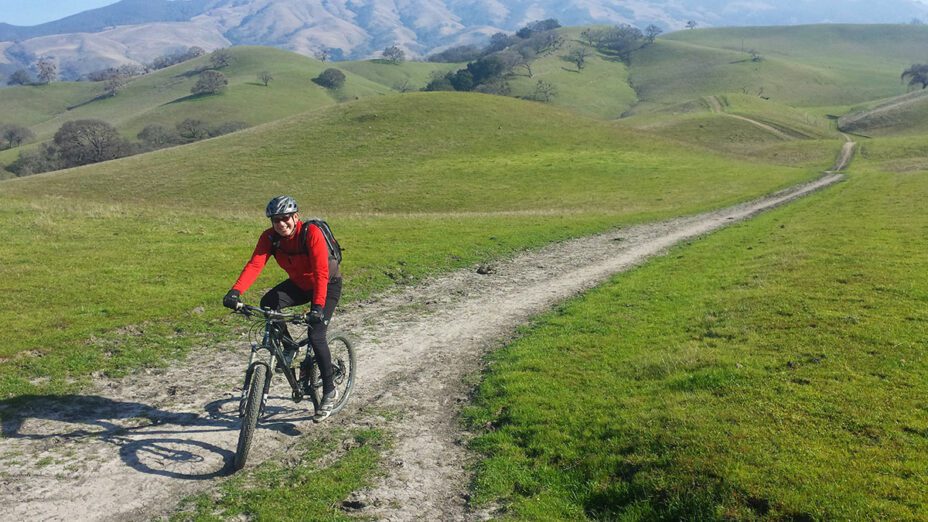
Planning to bike through the trails of Mount Diablo? Each year, thousands of cyclists enjoy the challenge of Mount Diablo’s trails and the beauty of its views.
Mountain biking is one of the best and most popular ways to explore Mount Diablo’s trails, but it’s important to keep the health of the ecosystem in mind when you’re having fun.

Mountain biking in the Diablo region. Photo: Mike Anciaux
During spring and summer months there are lots of young reptiles and amphibians out and about. They can be hard to spot when they’re so young, so it’s especially important to be vigilant and aware of your surroundings while hitting the trails during this time of year.
We encourage mountain bikers to bike as conservationists, by keeping the wellbeing of the land, its inhabitants, and other human visitors in mind while enjoying the beauty of the outdoors.
Next time you hit the trails, keep an eye out for wildlife so you can avoid them. Here are 10 types of wildlife that are particularly important to look for.
- Rattlesnakes
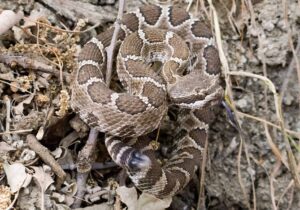
Photo: Bill Karieva
It’s officially rattlesnake season, and for the next few months, these venomous snakes will be a common sight in our local parks. Right now, young rattlesnakes, which don’t always make noise like adults, are starting to appear along the trails. Make sure to keep an eye out for this species and to keep your distance if you spot one!
- Western Fence Lizards
Also commonly known as blue-belly lizards, these common lizards are widespread throughout Mount Diablo and the surrounding Diablo region.
- Whipsnakes

Alameda whipsnake in Mount Diablo State Park. Photo: Scott Hein
There are two different types of whipsnakes that live on and around Mount Diablo, California whipsnakes and threatened Alameda whipsnakes. They live in a variety of habitats including grassland, chaparral, rock piles, and oak woodlands.
- California Kingsnakes

Juvenile kingsnake. Photo: Bruce and Joan Hamilton
These predators can and will kill and eat other snakes, even rattlesnakes! However, unlike rattlesnakes, California kingsnakes aren’t venomous or a threat to humans. However, these mighty snakes will still bite if provoked. Ouch!
- Skinks
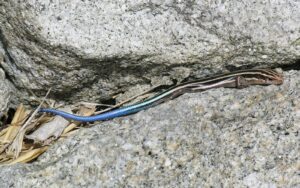
Skilton’s skink. Photo: Yasunori Koide / CC BY-SA
If you look underneath rocks or movable surface debris, you might be lucky enough to find a Skilton’s skink or a Gilbert’s skink. These species lay eggs in summer and can be found in many of Mount Diablo’s habitats, though they prefer rocky areas near water.
- Garter Snakes

Two garter snakes in a pond. Notice the third stripe! Photo: Bruce and Joan Hamilton
Garter snakes can look a lot like whipsnakes thanks to the yellow stripes down their sides. To differentiate one from a whipsnake, look for a third yellow stripe down the center of its back, which is never present on a whipsnake.
- California Tiger Salamanders
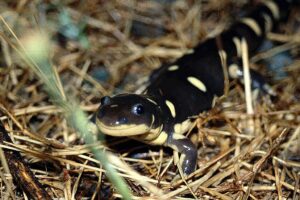
Photo: USFWS
California tiger salamanders are particularly rare and distinctive and have been seen on Mount Diablo. For most of the year, they live underground, coming out to breed when it rains. When one was observed on Save Mount Diablo land, it was a big deal. The population of California tiger salamanders has been significantly impacted by habitat destruction.
- Alligator Lizards

Photo: Franco Folini / CC BY-SA
These three- to seven-inch-long lizards can be commonly spotted on Mount Diablo’s roads and trails as well as various drier habitats throughout the area. Their eggs hatch at the end of summer typically. The juveniles are thin without dark markings on the back unlike the typical adult.
- Newts
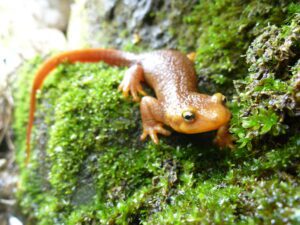
California newt. Photo: Santa Monica Mountains National Recreation Area
California newts (Taricha torosa) and rough-skinned newts (Taricha granulosa) are both slow-moving. They migrate to ponds and other bodies of water to mate between November and April, so be extra careful during those months.
- Gopher Snakes

Photo: Greg Schechter / CC BY
Gopher snakes (Pituophis catenifer) can be huge, and they look a lot like rattlesnakes (but have no rattles). They can live for up to 12 to 15 years.
Top photo by Mike Anciaux
